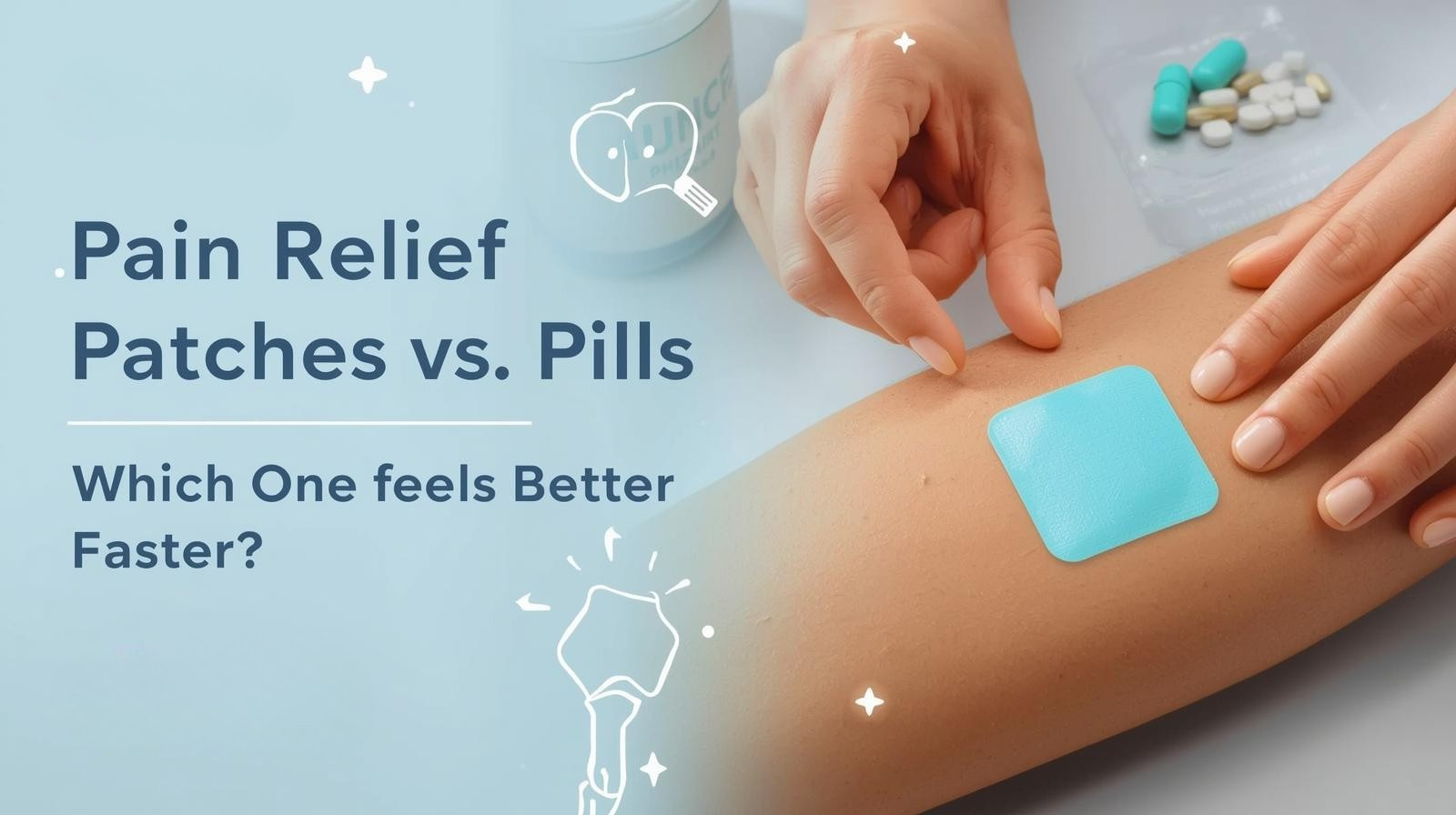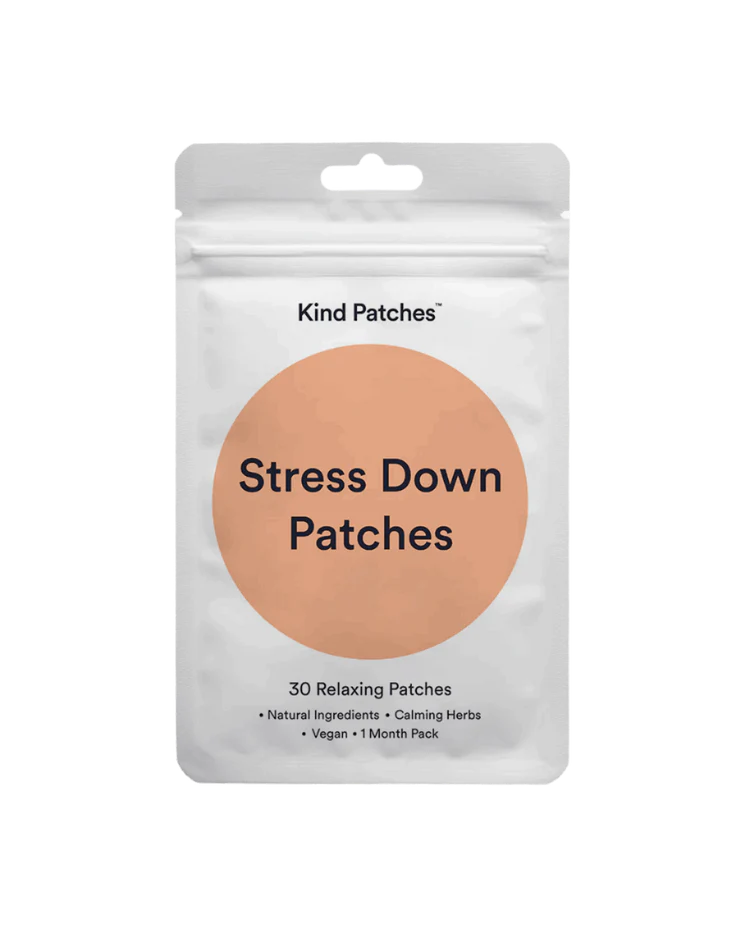
Pain Relief Patches vs. Pills — Which One Feels Better Faster?
Pain Relief Patches vs. Pills — Which One Feels Better Faster?
When you’re dealing with aches and discomfort, finding quick and effective relief is the top priority. The use of pain relief patches offers a modern approach to managing localized pain, presenting a compelling alternative to traditional oral medications. Many people wonder if these adhesive solutions work faster and more efficiently than the pills they are used to. Understanding the differences between these two methods is key to choosing the best option for your specific needs, whether you`re recovering from an injury or managing a chronic condition.
This comparison will explore how both pain relief patches and pills function, their speed of action, and their specific benefits. We will also touch upon other innovative patches, highlighting how this technology is revolutionizing personal health care solutions.
How Do Pain Relief Patches Work? The Science of Transdermal Delivery
Pain relief patches are a form of transdermal drug delivery system. This means they deliver medication directly through the skin and into the bloodstream or the local tissue. When you apply a patch, the active ingredients which can range from NSAIDs like diclofenac to local anesthetics like lidocaine are absorbed slowly and consistently over a set period. This method allows the medication to bypass the digestive system entirely.
The primary advantage of this targeted approach is that it concentrates the relief exactly where you need it most. By avoiding the stomach and liver, transdermal patches can reduce the risk of gastrointestinal side effects often associated with oral pain relievers. This makes them an excellent choice for individuals with sensitive stomachs or those who need continuous, steady relief over several hours.
Pills: The Traditional Route Through the Digestive System
Oral pain relievers, or pills, work by being swallowed, dissolved in the stomach, and absorbed into the bloodstream through the small intestine. From there, the medication travels throughout the entire body before reaching the site of the pain. This systemic delivery means that while your aching back might get relief, the medication is also affecting other parts of your body.
The speed at which a pill works depends on several factors, including its formulation, whether you take it with food, and your individual metabolism. While some pills are designed for rapid release, others may take 30 minutes to an hour to take effect as they navigate the digestive tract. This systemic journey is also what can lead to common side effects like stomach upset, nausea, or dizziness.
Speed of Relief: Which Method is Faster?
When it comes to speed, the answer isn`t always straightforward. For intense, acute pain, a fast-acting oral pill might provide quicker initial relief because it enters the bloodstream rapidly after digestion. However, for localized, persistent pain, pain relief patches can start working on the targeted area almost immediately upon application, even if the full systemic effect takes longer to build.
The choice often comes down to the type of pain you are experiencing. For a sudden headache, a pill is likely your fastest bet. For a sore muscle after a workout or a stiff joint from arthritis, a patch applied directly to the area provides direct and sustained comfort. The steady-dose nature of patches also means you won`t experience the "peaks and valleys" of relief that can occur as an oral medication wears off between doses.
FAQ: Do pain relief patches have fewer side effects?
Generally, yes. Because they bypass the digestive system, patches often cause fewer gastrointestinal issues than oral pain pills.
The Growing World of Health Patches
The technology behind pain relief patches is being adapted for a wide range of health care solutions, moving far beyond simple pain management. These innovative transdermal patches deliver active ingredients for various wellness goals, demonstrating the versatility of skin-based delivery.
For those struggling with restlessness, sleep patches can provide a steady, controlled release of ingredients like melatonin or valerian root to promote a calm and restful night without the grogginess that some oral sleep aids can cause.
A classic example of transdermal technology, motion sickness patches work by delivering medication like scopolamine to prevent nausea before it starts, offering long-lasting protection for travelers.
While often used in clinical settings for conditions like Parkinson`s, the principle behind dopamine patches showcases how transdermal delivery can manage complex neurological functions by providing a stable level of medication.
This expansion highlights a shift toward more targeted and convenient wellness options. From a weight loss patch designed to curb appetite to nutrient patches delivering vitamins, consumers now have more control over their health routines.
FAQ: Are all transdermal patches available over the counter?
No. While many, like some pain relief and motion sickness patches, are available over the counter, others like dopamine patches or GLP-1 patches require a prescription.
Beyond Pain: Exploring Other Innovations
The advancements in patch technology are particularly exciting in metabolic health. For instance, GLP-1 patches are being developed as an alternative to injections for managing type 2 diabetes and, in some cases, for weight management. These patches aim to provide a steady supply of a GLP-1 receptor agonist, a class of medication that helps regulate blood sugar and can reduce appetite. This needle-free approach could make managing these conditions much more convenient and comfortable for millions of people.
The research into a weight loss patch continues to evolve, exploring different ingredients and mechanisms to support healthy weight management. Similarly, the development of specialized patches, such as dopamine patches for neurological conditions or even cosmetic patches for skincare, underscores the immense potential of this delivery system. These advancements are paving the way for a future where taking your medication could be as simple as applying a sticker. The convenience of sleep patches and the effectiveness of motion sickness patches have already proven the concept works for everyday wellness.
FAQ: How do GLP-1 patches compare to injections?
GLP-1 patches are designed to offer a less invasive, continuous delivery of medication, potentially improving user comfort and adherence compared to daily or weekly injections.
Making the Right Choice for Your Pain
Deciding between pain relief patches and pills depends on your specific situation. Consider the type and location of your pain, your medical history, and your lifestyle.
Pills may be more suitable for:
Widespread or internal pain (like headaches or menstrual cramps).
Situations where you need very fast, strong, but short-term relief.
Individuals who don`t have sensitive stomachs or issues with oral medication.
Pain relief patches are often a better choice for:
Localized pain in muscles or joints (e.g., back pain, arthritis, strains).
People who need consistent, long-lasting relief over several hours.
Those who experience side effects from oral pain relievers.
Always consult with a healthcare professional before starting any new pain management regimen. They can help you weigh the pros and cons and recommend the safest and most effective health care solutions for your needs, whether it`s a pill, a patch, or another form of treatment.
A Personalized Approach to Feeling Better
The advancements in patch technology are particularly exciting in metabolic health. For instance, new patches are being developed as an alternative to injections for managing type 2 diabetes and, in some cases, for weight management. These patches aim to provide a steady supply of a GLP-1 receptor agonist, a class of medication that helps regulate blood sugar and can reduce appetite. This needle-free approach could make managing these conditions much more convenient and comfortable for millions of people to the forefront of wellness. By understanding how each method works, you can make an informed decision that helps you manage your pain effectively and get back to feeling your best faster.